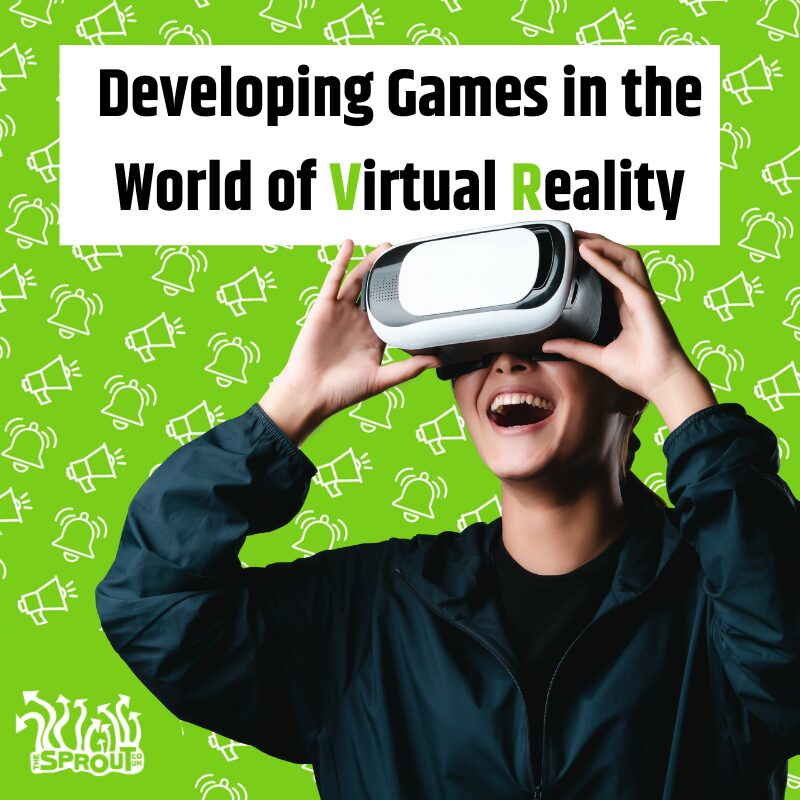Are you passionate about gaming and curious about the exciting world of virtual reality (VR)? VR game development is one of the most dynamic and innovative fields in the tech industry, bringing digital worlds to life in ways that were once only imaginable. Whether you dream of designing immersive worlds or creating realistic 3D characters, there are numerous pathways into this VR development industry.
Things to consider before getting started
Getting started in VR can feel daunting, and many beginners worry they won’t get it right on their first try. That’s totally normal! The VR development community is full of supportive groups, with many people who felt the same way when they started. Platforms like Discord even host communities where people from around the world share advice, answer questions and help one another out. Joining these groups can be a huge confidence boost and can also introduce you to friends who are just as passionate about VR.
Being part of a VR community can also give you a huge confidence boost. When you’re surrounded by others who share your passion and are excited to see what you’re working on, it’s easier to stay motivated, keep learning, and even share your work in progress without fear of criticism. As you connect with others, you may also form friendships with people who are just as enthusiastic about VR as you are. Many developers in these communities collaborate on projects, brainstorm ideas together, and celebrate each other’s successes, creating a fantastic support network for new and seasoned creators alike.
But WHERE to start?
So, you have this idea you’d like to turn into a reality, but you don’t quite have that blank canvas yet. Well, applications like Unity or Unreal Engine have got you covered! These game engines are widely used in the gaming and VR industry, and they provide all the tools you need to start building your very own virtual world from scratch, and the best part? both offer free personal licences, so you can download and experiment with them without any upfront cost.
These powerful platforms serve as your digital canvas, letting you design, model, and animate your VR world using a range of built-in features and tools. In Unity, for example, you’ll find a user-friendly interface with tools that make it easy to organise objects, adjust lighting, add physics, and even code interactions. Meanwhile, Unreal Engine offers stunning graphic capabilities out of the box, allowing you to create realistic environments with high-quality visuals and smooth rendering.
When you’re ready to dive into creating your first VR experience, there are a few key aspects to consider to ensure your project is both enjoyable and effective. First and foremost, focus on performance. In VR, the user’s sense of immersion relies heavily on how smoothly the experience runs, so aim for a frame rate of 90 frames per second or higher. A high frame rate not only makes the visuals appear seamless but also prevents lag or ‘stuttering,’ which can disrupt immersion and lead to motion sickness for some users.
What experience do I need?
I’ll cut to the chase! You don’t need to be a coding expert to start experimenting. Unity and Unreal Engine both have visual tools such as Unity’s Bolt or Unreal Blueprints which allow you to create game logic without writing a single line of code. These tools are perfect for beginners who want to see their ideas come to life quickly and understand how things work before diving into programming. However, if you do want to take your project to the next level, learning some coding can open up even more possibilities, giving you complete control over your VR experience.
Visual scripting is perfect for experimenting with your ideas and testing out different game elements quickly. Say you want an object to light up when a player interacts with it or perhaps a door to open when certain conditions are met. With Bolt or Blueprints, you can set up these interactions with simple drag-and-drop actions, seeing immediate results as you tweak and refine your design. It’s a great way to get hands-on with VR development, learn how systems function together, and bring an interactive, immersive environment to life without being held back by a lack of coding knowledge.
You’re all set!
Stepping into the world of VR game development is an exciting journey filled with endless possibilities. Whether you’re starting with simple visual scripting or diving deeper into coding, the tools and resources you need are more accessible than ever. With platforms like Unity and Unreal Engine at your fingertips and supportive communities to help along the way, there’s nothing stopping you from turning your ideas into immersive VR experiences.
Remember, it’s normal to feel a bit overwhelmed at first, but as you experiment, learn, and connect with others, you’ll build the skills and confidence needed to create something truly unique. Remember to think outside the box and explore lots of ideas for VR outside of gaming.

